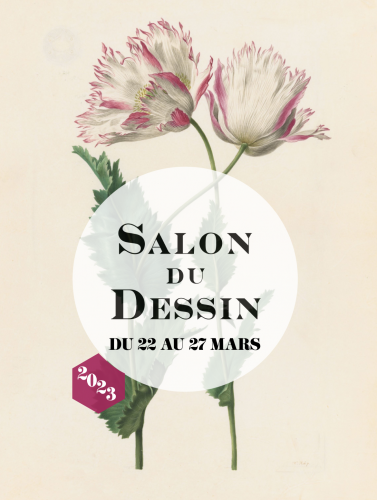Maurice Denis was born in Normandy, in Granville, a small coastal town on the ocean; his parents both worked; his father was a railroad employee and his mother made hats. Very quickly, Maurice Denis was sent to Paris where he studied. He attended the Lycée Condorcet and took drawing classes at the same time from 1884, when he was fourteen years old. During this period, he was already confronted with the exercise of copying in front of the paintings in the Louvre. Four years later, in 1888, he continued his education by entering the Académie Julian, a private academy, and at the same time attended the École des Beaux Art in the capital. It is on this occasion that the young Maurice Denis met his future companions: Paul Sérusier, Pierre Bonnard, Paul-Élie Ranson, Henri-Gabriel Ibels and Edouard Vuillard.
In the beginning: the Nabis
These encounters were decisive for Maurice Denis in several ways. First of all, he met young painters who shared his aesthetic and pictorial visions, even philosophical. Indeed, the young artist was looking for renewal in painting, he was in search of a new, deeper and more authentic meaning, a direct link with painting, just after the advent of the symbolist movement.
The founding element is the meeting between Maurice Denis and Paul Sérusier. A gift sealed this budding friendship. Paul Sérusier gave Maurice Denis one of his paintings, The Talisman. Denis's aesthetic expectations had just materialized through this painting. Paul Sérusier painted this canvas in contact with Paul Gauguin, with his gaze and his advice: "How do you see these trees? They are yellow. Well, put yellow, this shadow, rather blue, paint it with pure ultramarine, these red leaves? Put vermilion." This sentence alone sums up the new pictorial line that will animate our young painters; to paint not according to the exact nature of things but on the contrary according to the way we perceive it. Thus, gathered in disciple around Paul Gauguin, Maurice Denis, Sérusier, Bonnard, Ker-Xavier Roussel, Paul-Élie Ranson and the others decided to create the Nabis group. All of them were involved in a form of Christian esotericism wrapped in symbolist aesthetics. Nevertheless, each of them had a favorite theme. For Maurice Denis, it is the theme of the Sacred that occupies a large part of his work. At his first exhibition, in 1891, he presented the work Mystère Catholique at the Salon des Indépendants; this first presentation at only twenty-one years of age allowed him to be noticed and acclaimed by his contemporaries.
Maurice Denis, the artist writer
Maurice Denis' influence does not stop here, he is also known as the theorist of the Nabi movement. Indeed, Maurice Denis' literary production is as notable as his artistic production. Between 1890 and 1943, he wrote more than two hundred texts: art reviews, philosophical articles, essays, not to mention a dozen books written by the artist. One of his most famous texts remains his Definition of Neo-traditionalism which he wrote in 1890 and which many consider to be the manifesto of the Nabis. This text is also a charge against neo-impressionism and a promotion of painting based on the appreciation of nature according to the eye and the impression, banishing imitation and glorifying the feeling felt, without embellishment or artifice that would serve the canvas.
The first commissions of the painter decorator
In the second half of his life, Maurice Denis was often solicited for his talents as a decorator; both through public and private commissions, the artist enjoyed a growing reputation both in France and abroad. In 1904, he made panels for the Music Room of Curt Von Mutzenbecher, steward of the Imperial Theater in Wiesbaden. In 1907, Ivan Morozov, the great Russian collector, lover and friend of French modern painters, called on his services. Morosov knew France and its artists very well, and addressing Denis meant addressing the entire generation of artists that Morozov collected and loved. He created a set of thirteen panels for him in his Moscow palace, using ancient themes. We can also mention his intervention with Alexandre Berthier, Prince of Wagram, for whom he decorated a staircase with the work The Golden Age composed of five panels taking up ancient themes, strongly inspired by the frescoes of the Quattrocento. In France, Maurice Denis was commissioned by the Théâtre des Champs-Elysées in 1912, where he produced several preparatory works to decorate the frieze of the dome of the theatre, including La Péri, named after a ballet that was regularly performed at the theater. All of these commissions in the early 1900s established Maurice Denis' reputation as a decorative painter, adding a new facet to this already prolific artist.
The period of the Occupation was, as for many Frenchmen, a difficult time for Maurice Denis. During this period, he was offered several positions which he successively refused, refusing to serve under an oppressive regime. Maurice Denis was hit by a truck and died at the Cochin Hospital on November 13, 1943.


